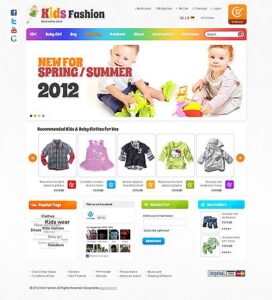
How to Choose the Best Shopify Theme for Your Online Store-2023

Best Shopify Theme
As experts in the field of eCommerce, we understand the importance of selecting the right Shopify theme for your online store. A well-designed and optimized theme can significantly impact the success of your business, attracting more visitors, increasing conversions, and improving your overall user experience. In this comprehensive guide, we will walk you through the process of choosing the best Shopify theme that will not only meet your specific requirements but also outrank other websites in Google search results.
1. Understanding Your Brand and Target Audience
Before diving into the vast sea of Shopify themes, it’s crucial to have a clear understanding of your brand identity and your target audience. Take some time to define your brand’s unique selling proposition (USP) and identify the characteristics that differentiate you from your competitors. This will help you choose a theme that aligns with your brand values and effectively communicates your message to your target market.
2. Prioritizing User Experience and Mobile Responsiveness
In today’s mobile-driven world, user experience (UX) and mobile responsiveness are paramount. Google places a strong emphasis on mobile-friendly websites, so selecting a Shopify theme that is optimized for mobile devices is crucial for better search rankings. Ensure that the theme you choose is fully responsive, loads quickly, and provides a seamless browsing experience across all devices. A positive user experience will not only improve your search visibility but also keep visitors engaged and increase the likelihood of conversions.
3. Evaluating Design Customization Options
The visual appeal of your online store plays a significant role in attracting and retaining customers. When selecting a Shopify theme, it’s essential to evaluate the design customization options it offers. Look for themes that provide a wide range of design elements, such as customizable layouts, fonts, colors, and imagery. This flexibility will allow you to create a unique and visually appealing storefront that represents your brand identity and captivates your audience.
4. Assessing Loading Speed and Performance
Website loading speed is a critical factor in both user experience and search engine rankings. Slow-loading websites not only frustrate visitors but also tend to rank lower in search results. Therefore, it’s imperative to choose a Shopify theme that is optimized for speed and performance. Look for themes that are lightweight, well-coded, and have a good track record of fast loading times. A speedy website will not only enhance user experience but also boost your chances of ranking higher on Google.
5. Considering SEO-Friendly Features
To outrank other websites and improve your organic search visibility, it’s vital to select a Shopify theme that comes with built-in SEO features. These features can include customizable meta tags, clean and optimized code, structured data markup, and SEO-friendly URL structures. By leveraging these SEO capabilities, you can optimize your website’s on-page elements and improve its overall search engine friendliness.
6. Checking for Integration Compatibility
Integrating third-party tools and services can enhance the functionality and performance of your online store. Before finalizing a Shopify theme, ensure that it is compatible with the necessary integrations you require. Whether it’s payment gateways, marketing automation software, analytics tools, or social media plugins, seamless integration will enable you to leverage the power of these additional tools to drive more traffic, engage customers, and boost conversions.
7. Reading User Reviews and Ratings
To gain deeper insights into the performance and reliability of a Shopify theme, it’s helpful to read user reviews and ratings. Check out the Shopify theme’s official marketplace or reputable review platforms to see what other users have to say about their experiences. Look for themes with positive feedback, high ratings, and a significant number of installations. These indicators will give you a better understanding of the theme’s quality and its ability to outrank competitors in search results.
Conclusion
In conclusion, selecting the best Shopify theme for your online store requires careful consideration and analysis. By understanding your brand, prioritizing user experience and mobile responsiveness, evaluating design customization options, assessing loading speed and performance, considering SEO-friendly features, checking for integration compatibility, and reading user reviews, you can make an informed decision that will help you outrank other websites and achieve success in the competitive eCommerce landscape.
Remember, your website’s design and functionality have a direct impact on user satisfaction, conversions, and search engine rankings. Take the time to choose the right Shopify theme that aligns with your brand vision, engages your audience, and helps you climb to the top of Google’s search results.

Leave a Comment